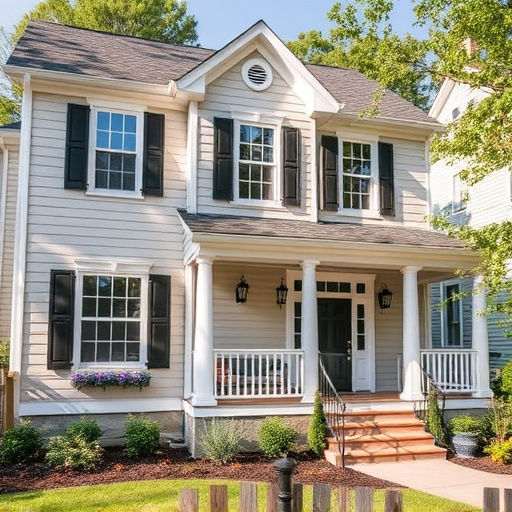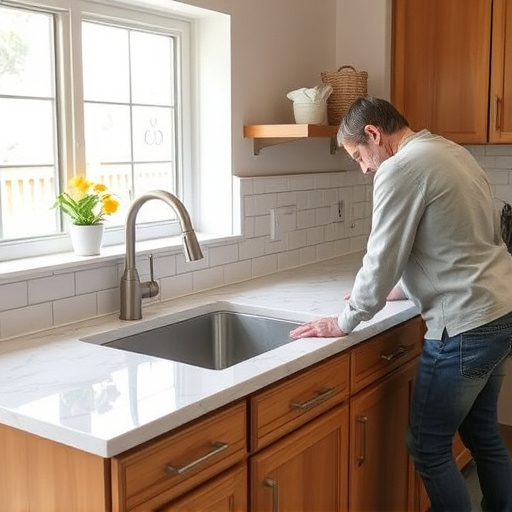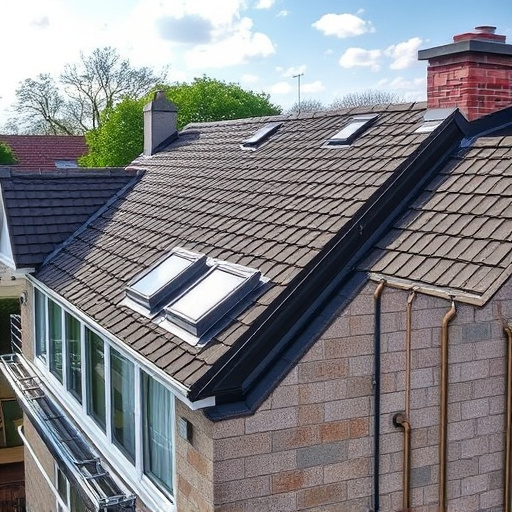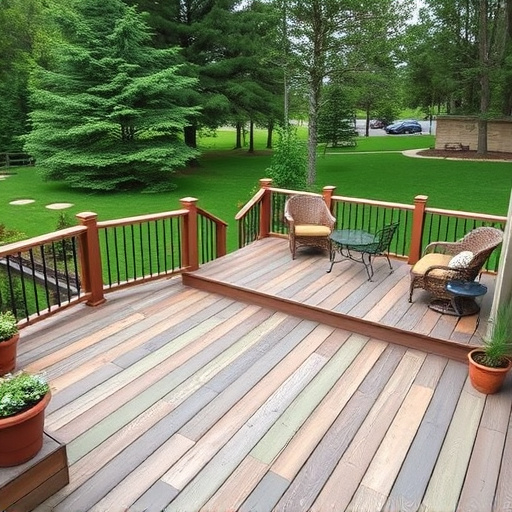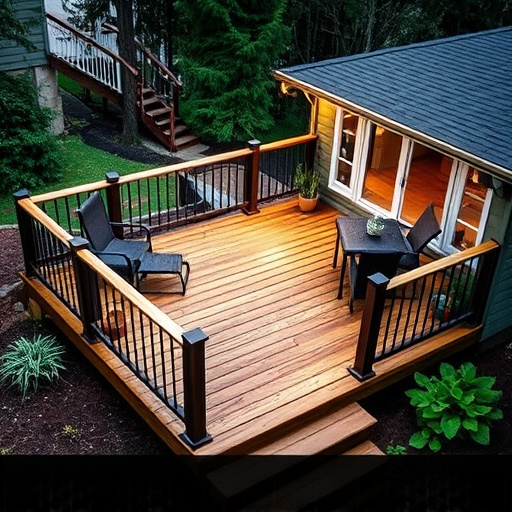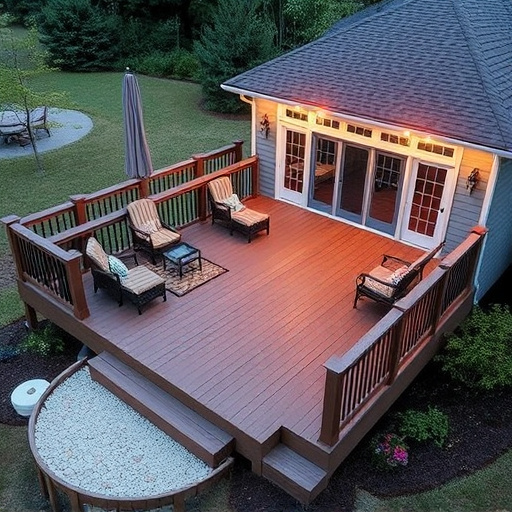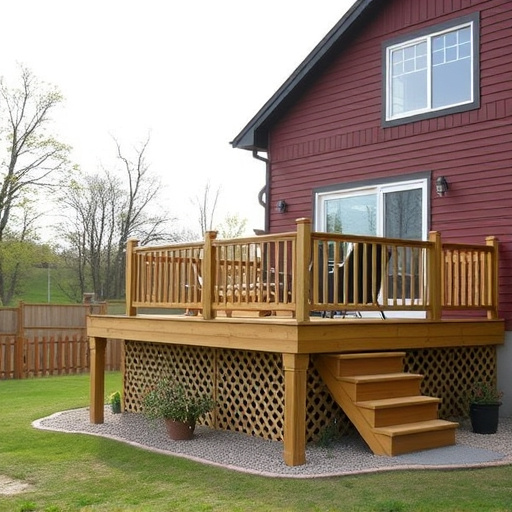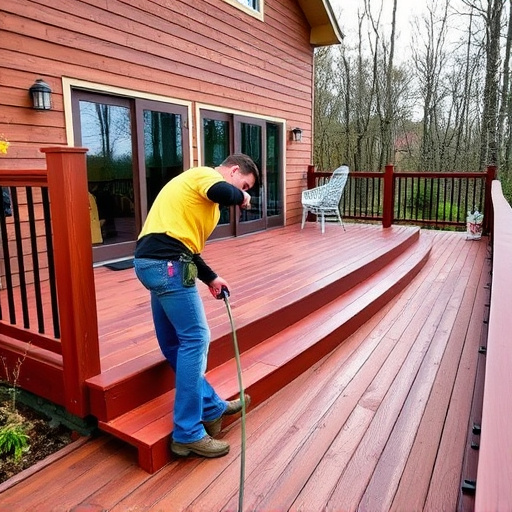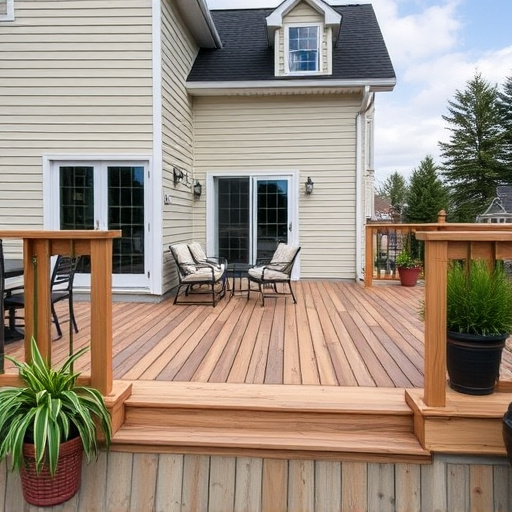Promptly address residential decking cracks and splinters to prevent structural damage and maintain aesthetics. Regular inspections and maintenance crucial for catching issues early. Use appropriate tools and materials for repairs, considering professional help for extensive damage. Regular care and occasional professional services extend residential decking lifespan.
“Keep your home’s outdoor space safe and aesthetically pleasing with our comprehensive guide to repairing cracks and splinters in residential decking. Discover common issues plaguing decks, learn about essential tools and materials for effective fixes, and follow a step-by-step process designed to restore your deck’s structural integrity and beauty. Master these tips, and you’ll extend the life of your residential decking while ensuring a robust and inviting outdoor living space.”
- Identifying Common Residential Decking Cracks and Splinters
- Tools and Materials for Effective Deck Repair
- Step-by-Step Guide to Successful Residential Decking Repairs
Identifying Common Residential Decking Cracks and Splinters
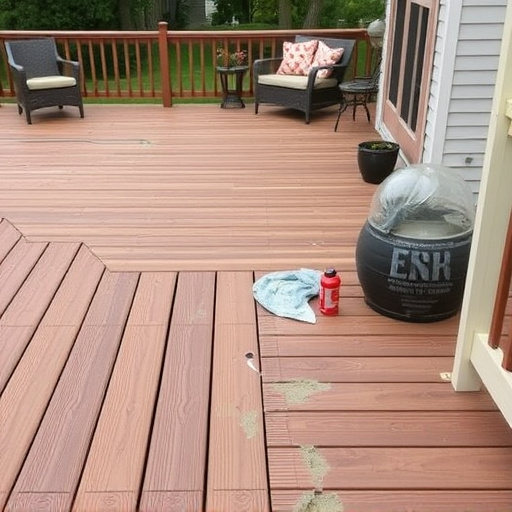
Residential decking cracks and splinters are common issues that can arise due to various factors such as weather changes, pests, or simply age. Identifying these problems early on is crucial for maintaining a safe and aesthetically pleasing outdoor space. Look out for vertical or horizontal cracks that may indicate structural damage or settling of the deck. Splinters, often caused by loose boards or uneven surfaces, pose not only safety hazards but also invite further damage if left unattended. Regular inspections are key; check for any signs of warping, cupping, or lifted edges, which could signal more severe issues like rot or pest infestation.
Addressing these problems promptly is essential, as neglecting them can lead to more extensive and costly repairs. Homeowners should consider professional roofing services or siding installation if the damage is extensive or if their deck requires significant restructuring. Regular maintenance, including cleaning and sealing, can prevent many of these issues from developing in the first place, ensuring your residential decking remains a relaxing retreat for years to come.
Tools and Materials for Effective Deck Repair
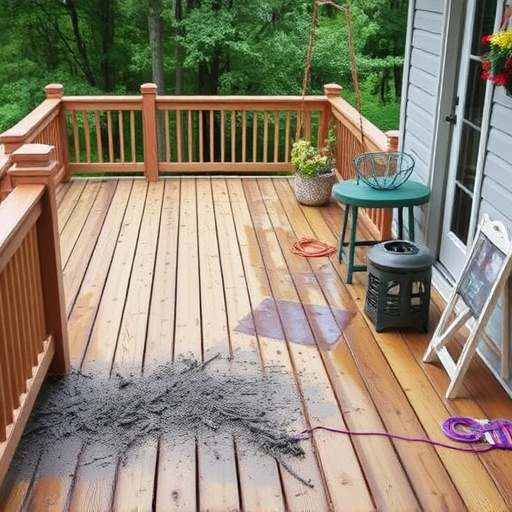
When it comes to repairing cracks and splinters on your residential decking, having the right tools and materials is essential for effective and long-lasting results. Start with basic tools like a hammer, chisel, and drill, which are indispensable for removing loose parts, chipping away damaged wood, and making precise holes for repairs. For larger cracks, consider using a concrete patching compound, suitable for both interior and exterior residential decking applications. These compounds come in various textures to match different types of wood and can fill deep crevices, enhancing the deck’s structural integrity.
Don’t forget about safety gear, such as gloves and goggles, to protect yourself from sharp edges and debris. For more intricate repairs or extensive damage, consult a professional home service solution. While DIY methods offer cost-effective exterior home improvements, certain tasks may require advanced techniques and specialized tools. Moreover, ensuring the deck’s structural soundness is crucial for safety, especially for residential roofing projects that rely on sturdy decks as part of the overall structure.
Step-by-Step Guide to Successful Residential Decking Repairs
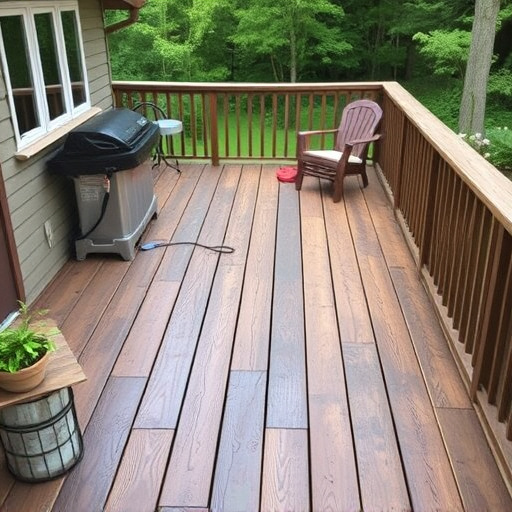
Residential decking repairs are a common necessity to maintain your outdoor living space. Before tackling any issues, it’s essential to have the right tools and materials, including wood putty, paint or sealant, and sandpaper. Start by identifying the crack or splinter and assessing its severity. For smaller cracks, use wood putty to fill them in, ensuring a smooth surface before sanding gently to remove any excess.
For larger or structural damages, consider replacing the affected boards. Remove the old decking, cutting along the nails or screws holding it in place. Measure and cut new boards to size, securing them with fresh fasteners. Once the repairs are complete, apply a protective coat of paint or sealant, enhancing the deck’s durability against the elements. Regular maintenance and prompt attention to cracks will ensure your residential decking remains a beautiful and safe addition to your home, potentially extending its lifespan with proper care and occasional professional roofing services.
Regular maintenance is key to preserving your residential decking. By identifying common cracks and splinters early on, using the right tools and materials, and following a systematic repair process, you can extend the lifespan of your deck and ensure it remains a safe and aesthetically pleasing outdoor space. Remember, proper care and prompt repairs will prevent minor issues from becoming major structural problems, ultimately saving you time, money, and hassle in the long run.




